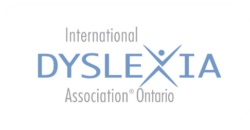Maya’s Book Nook is a website created by Speech-Language Pathologist Dr. Lakeisha Johnson. The Behind the Book section houses a bank of materials to accompany a diverse, culturally relevant children’s book. Equally useful for both parents/caregivers and educators, these handouts include target vocabulary words, as well as questions […]
It is of critical importance that educators learn as much as they can about students’ home language in order to provide both effective and culturally relevant and responsive instruction. ASHA maintains a list of phonemic inventories that support educators in learning more about the structure […]
Tier 2 words appear in many different contexts and are often subtle or precise ways to say relatively simple things. Since these aren’t words that will typically be used in a student’s conversations and they aren’t domain-specific, they should be given more focus than Tier […]
This infographic highlights how students unlock the power of reading to learn. In the early years, children gain vocabulary, knowledge, and understanding of their home language through listening. This can be boosted by engaging in meaningful conversations, listening to stories read aloud, and exposure to […]
Intensive intervention helps students with severe and persistent learning needs, including students with learning disabilities. Data-based individualization is an approach to intensive intervention. This website provides an outline of the steps of data-based individualization, walking educators through each step.
In this overview from Reading Rockets on teaching text structure, you’ll learn about the 5 most common text structures (narrative, descriptive, expository, procedural/instructional, and argumentative/persuasive) and their features and how to help students learn to identify and use text structures in their reading and writing. […]
Alloprof Enseignants offre différents outils pratiques pour faciliter l’utilisation des ressources d’Alloprof et aider la communauté enseignante à mieux soutenir les élèves et leurs parents dans les défis scolaires.Ce service offre une panoplie d’articles, d’activités d’apprentissage, de dossiers thématiques et de ressources imprimables afin de donner un coup de pouce aux profs du Québec.Alloprof développe des services professionnels et des ressources numériques de soutien scolaire et les rend accessibles gratuitement à tous les élèves du Québec et leurs parents.Il y a 11 matièresDes sections pour étudiant, enseignant(e) et parent(s)Nous pouvons chercher par niveaux, matière et par méthode (fiches, jeux, vidéos)
This practical guide from Reading Universe is packed with educator tips and resources to teach letter formation.
Etymonline is a free online etymology dictionary that provides information about the origins and historical development of words in English. It offers detailed explanations of word origins, meanings, and changes over time, often tracing words back to their earliest recorded usage. This resource can help educators and students understand how words have evolved and diversified throughout history, as well as help understand the orthography and morphology of words.




